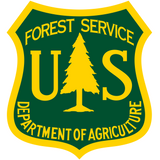
Ventilated Bulk Bags - For Storing Food, Produce & Firewood - 31" x 41" x 58"
Ventilated Bulk Bags
Specs
- Size: approx. 31" L x 41" W x 58" H
- Weight capacity: 2,200 lbs Bulk Bags
Features
- Open top and Spout bottom
- Hold up to one ton of materials
- Has four built-in corner straps for easy lifting with a forklift
Common FAQs
1. What are bulk bags?
Bulk bags, as known as super sacks or FIBC (Flexible Intermediate Bulk Containers), are huge woven bags for large amounts of materials. They typically have a weight capacity of 2,000 to 3,000 pounds.
FIBCs (flexible intermediate bulk containers) have flexible walls and are typically used to carry dry solid materials, such as sand, compost, and gravel.
They are very versatile, able to contain both dry and wet materials, e.g. grain, seed, rice, flour, sugar, foodstuffs, fertilizers, and beans.
2. Advantages of bulk bags
A) Lower cost
One 2,000-pound bulk bag can be used in lieu of forty 50-pound sandbags. Filling and emptying one bulk bag is also far easier, faster, and more efficient than filling and emptying forty sandbags.
B) Safer
Instead of needing to move around materials by hand, bulk bags enable forklifts to be used for moving. This reduces potential injuries for workers.
C) Reduced packaging weight
By using fewer but larger bags to carry material, you can reduce the quantity and weight of the bags needed to carry the material. If properly packed and stacked, bulk bags can be stacked much higher than smaller bags can be, allowing you to fully utilize the storage capacity of a warehouse.
Use bulk bags as the first layer of defense against beach erosion.
FAQ
What size sandbag should I buy?
| Size |
|
 14" x 26" ultra heavy duty sandbags |
 12" x 38" tube sandbags |
 18" x 30" sandbags |
 25" x 40" sandbags |
 31" x 45" sandbags |
 35"L x 35"W x 50"H bulk bags |
 80" x 80" 80" x 80"poly sheets |
| How to fill it |  Sandbag filler |
|||||||
| UV Protection | 3-6 months | 7-15 months | 6-9 months | 3-6 months | None | None | 6-12 months |
None |
| Weight capacity | 50 lbs | 100 lbs | 90 lbs | 50 lbs | 50 lbs | 100 lbs | 2,000 lbs | N/A |
| What to put in it |
sand gravel |
sand |
sand gravel materials food |
materials food |
materials garbage |
compost sand debris gravel garbage |
grass clippings leaves branches twigs |
|
| Purpose |
flood control erosion control military fortification earthbag homes |
flood control erosion control military fortification earthbag homes |
inlet protection flood protection sediment control on hills/slopes securing plastic sheeting |
flood control erosion control storage earthbag homes |
storage |
storage trash bags |
storage hauling materials |
collect green waste |
| Ties included | Yes | Yes | Yes | Yes | No | No | Yes (corner straps) | No |
| Color(s) |
White Green Beige Orange |
Black | White | White | White | White | White | White |
Our Customers
Our sandbags, burlap bags, and landscape staples are trusted by
 Marine Corps
Marine Corps
 US Army
US Army
 Park Service
Park Service
 Forest Service
Forest Service
 Red Cross
Red Cross
 Walmart
Walmart












